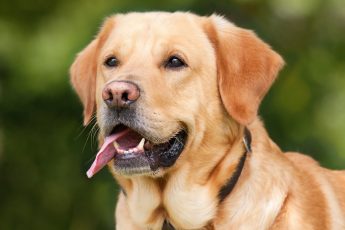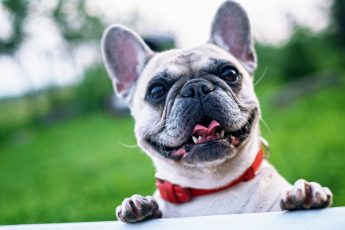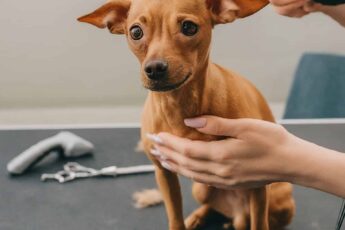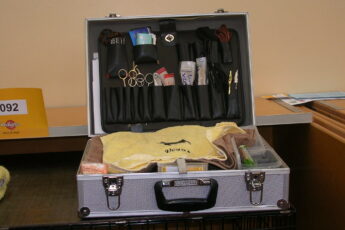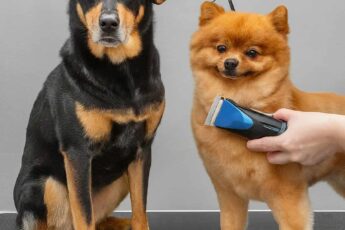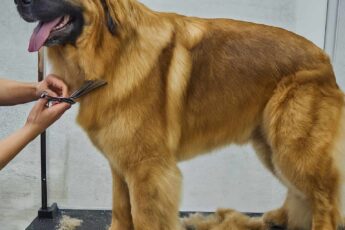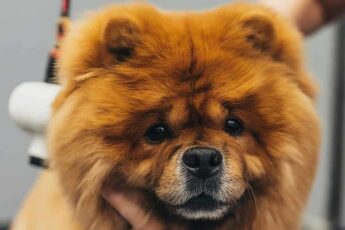Do German Shepherds need grooming?
The answer is yes, but not as much as some other breeds.
German shepherds are known for their thick, long coats and ability to become excellent working dogs. However, these traits can make grooming challenging for owners unfamiliar with German shepherd grooming.
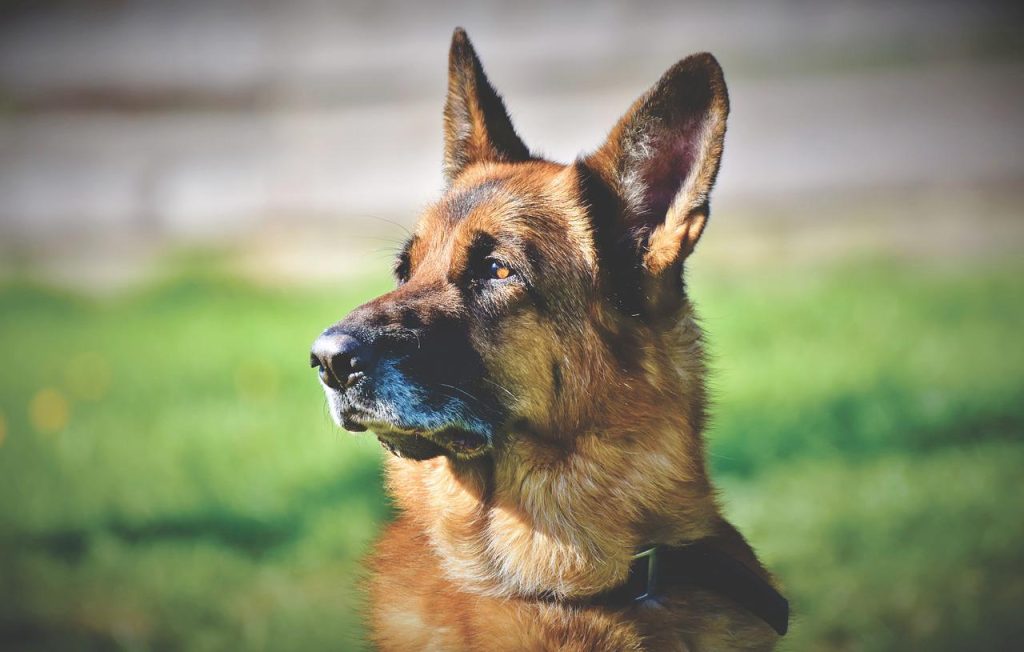
Because of their double coats, German shepherds have less shedding than many other breeds. They also tend to have fewer skin problems than other breeds of dogs because of their dry skin. These factors should be considered when deciding how often your dog needs grooming.
What kind of grooming does a German Shepherd need?
They have short, smooth coats that shed very little, but they do shed some. Their fur coat also tends to tangle easily, so brushing them regularly is essential. Use a pin brush or slicker brush to untangle any knots in the dog’s hair before you start brushing them with the brush.
You want to remove any mats before grooming because it’s easier for both of you to remove them before brushing begins. You should also pay special attention to cleaning their eyes, especially if has white fur around them (like many German shepherds do).
This area tends to get dirty quickly, leading to eye infections if not properly cleaned regularly.
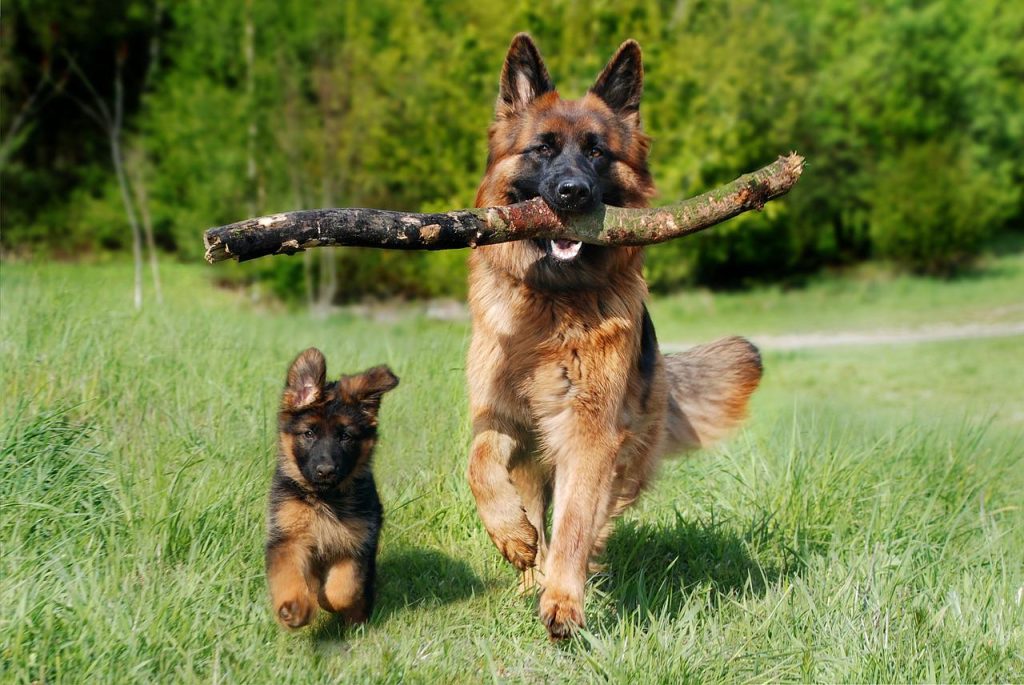
Is it OK to cut a German Shepherd’s hair?
But there are some issues that you should be aware of before you do it. First, you should know that cutting your German shepherd’s hair too short is not recommended.
They have thick coats, which will grow back quickly if you do so. So trimming their hair is a better option instead of cutting it short. When trimming the fur around their face and neck, use scissors or clippers with a guard on them so you don’t accidentally cut too much fur off at once.
How often should a German shepherd be groomed?
The first grooming will occur in June or July, and the second in January or February. The main reason for these two different times is that these are the times when the dog’s coat sheds out all its undercoat.
When this happens, you will see your pet’s new coat growing underneath it. For this reason, your German shepherd should be groomed right after its old coat falls out and before the new one grows in.
This way, you will remove all the dead hair that might get stuck in his claws and ears and clear his eyes from any clumps of hair bothering him.

How often should a German Shepherd be bathed?
Professional groomers generally recommend bathing every six weeks unless your dog gets dirty or smelly.
When you take your dog on an outdoor adventure, it’s not necessary to bathe him every time he comes home—in fact, if it’s not too dirty, you can brush off his coat when you get back and leave him until his next outing.
What happens if you don’t groom your German Shepherd
If he gets too dirty, it can cause other infections as well. His hair (or fur) also helps to protect him from the sun. A neglected coat can make a dog susceptible to sunburn and skin cancer.
Your dog’s teeth are also more vulnerable when not brushed regularly and kept clean. If you don’t groom your German shepherd, it will affect his health.
German Shepherd grooming
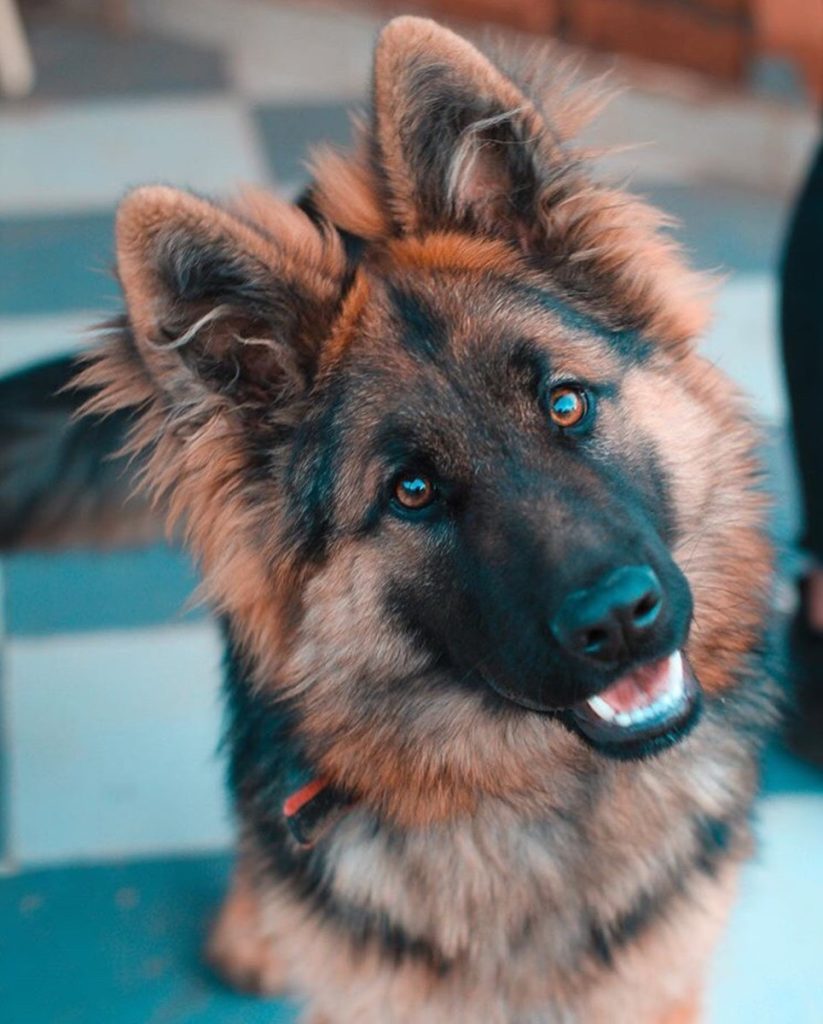
German shepherds have a double coat, soft undercoat, and coarser outer guard hair.
The undercoat is often neglected in grooming, as many assume it is not as important as the guard hair coat. However, the undercoat helps to keep the dog warm in winter and cool in summer.
It also protects the dog from insect bites and stings, such as those fleas or ticks. The undercoat must be maintained in its healthy state to continue to provide these benefits to the dog.
Basic grooming advice
Regularly brushing your dog means different things for different dogs, depending on the length of their fur and what kind of lifestyle they live. If you want to start with the most basic level of care for your German Shepherd, brushing daily would be a good place to start.
However, if you want to do more than eliminate knots and tangles from your dog’s fur, you might consider taking things up a notch with professional grooming once every few months. A professional groomer can work wonders on both long-haired and short-haired breeds alike by helping to remove dead hair and any mats or tangles.
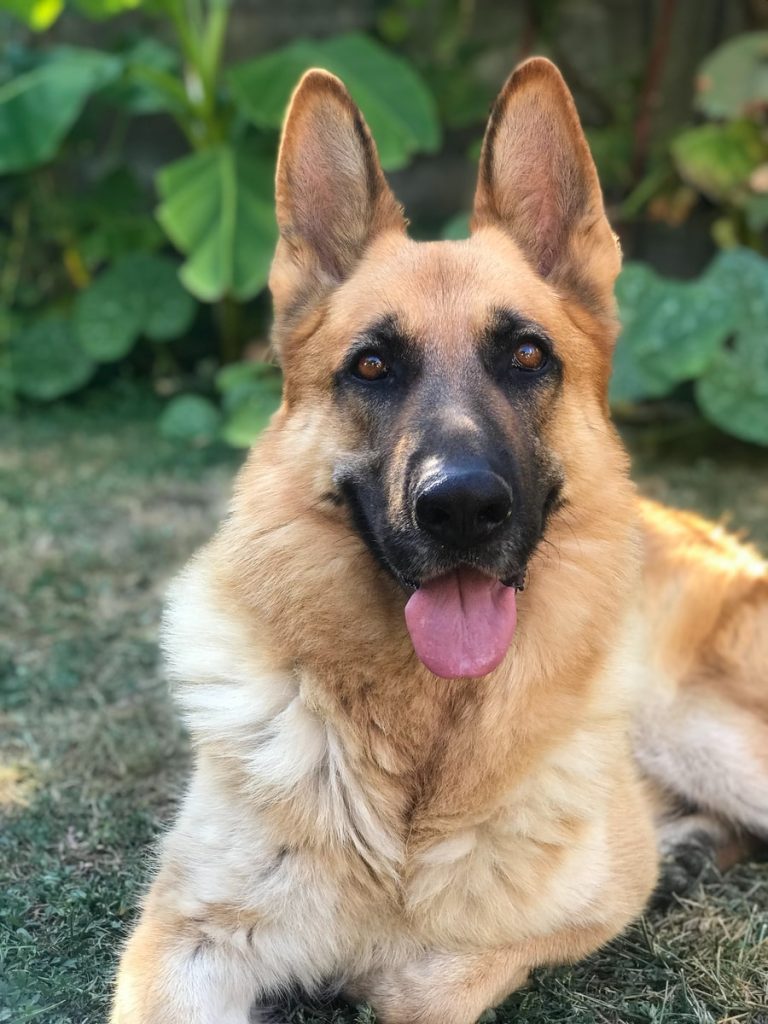
Tips for brushing & trimming
German Shepherds need regular grooming to look and feel their best as a long-haired breed. The first step to grooming your dog is to brush out all tangles and knots that may be hiding in their fur. This may mean daily brushing for some breeds to keep the fur knot-free and tangle-free.
If you are able or willing to brush your dog daily, we recommend doing so with a bristle brush. Brushing your dog with a bristle brush will help distribute the natural oils from the skin down through the fur, making your German Shepherd’s coat shiny and soft.
Dog grooming supplies for a German shepherd
| Image | Price | Buy | Title |
|---|---|---|---|
 Top Top | Buy Now | oneisall Dog Shaver Clippers Low Noise Rechargeable Cordless Electric Quiet Hair Clippers Set for Dogs Cats Pets | |
 Top Top | Buy Now | Gimars Titanium Coated Professional 6 in 1 4CR Stainless Steel Dog Grooming Scissors with Safety Round Tip, Heavy Duty Pet Grooming Scissor for Dogs, Cats and Other Animals | |
 Top Top | Buy Now | AIRROBO Dog Grooming Vacuum, Dog Hair Vacuum,12000Pa Strong Pet Grooming Vacuum for Dogs, 2L Large Capacity Dog Vacuum for Shedding Grooming Hair, Quiet, 5 Pet Grooming Tools, PG100 | |
 Top Top | Buy Now | GoPets 2-Sided Dematting Comb - Professional Grooming Rake for Cats & Dogs, Long Hair Deshedding Tool, Undercoat Brush - for Matted & Long-Haired Pets | |
 Top Top | Buy Now | Bonve Pet Nail Grinder for Dogs - Upgraded Dog Nail Trimmers Super Quiet, 2 Speeds, Rechargeable, 2 Grinding Wheels for Small Large Dogs & Cats | |
 Top Top | Buy Now | Go Pet Club 30-Inch Dog Grooming Table, Adjustable Arm Foldable Non-Slip Top, Rust-Proof, Waterproof, Warp-Free Trimming Table for Pets, Black | |
 Top Top | Buy Now | Wahl USA Dry Skin & Itch Relief Pet Shampoo for Dogs – Oatmeal Formula with Coconut Lime Verbena & Pet Friendly Formula, 24 Oz - Model 820004A | |
 Top Top | Buy Now | Bodhi Dog New Grooming Pet Shampoo Brush | Soothing Massage Rubber Bristles Curry Comb for Dogs & Cats Washing | |
 Top Top | Buy Now | Bodhi Dog Natural Dog Cologne | Premium Scented Deodorizing Body Spray for Dogs & Cats | Neutralizes Strong Odors | Dog Perfume with Natural Dog Conditioner | Made in USA (Baby Powder, 17 Fl Oz) |
German shepherd care
Coat and skincare
The GSD’s coat requires minimal maintenance—it doesn’t need to be brushed daily or bathed too often. It’s best to brush it occasionally with a good bristle brush (or “slicker”) to keep it from tangles and matting; avoid using brushes with wire bristles, as these can tear out the dog’s fur.
After brushing, you can leave the hair or bathe using a good dog shampoo. This will help keep the coat clean and smelling nice between baths—which should happen about once every two weeks to prevent skin irritation and infections.
German Shepherds’ skin and hair are susceptible to many commercial products used on dogs. Because of this, it is important to use personal care products that do not contain alcohol or other harmful chemicals, such as fragrances, that can damage the skin.
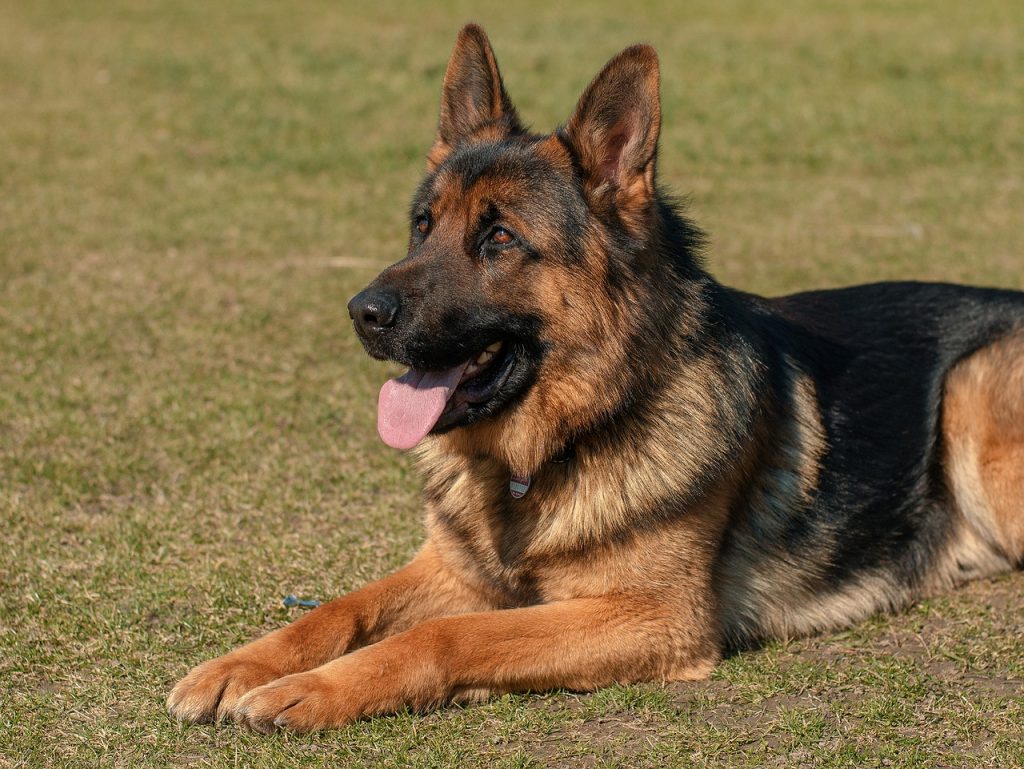
German Shepherds’ skin needs extra care because they get yeast infections between their paw pads. This is a common problem amongst many dogs with hair between their toes; however, German Shepherds’ paws tend to be especially sensitive due to the length and thickness of their fur.
Extra care should be taken when walking your German Shepherd around areas with loose dirt or other substances.
The ears, tail, and face insides are susceptible to bacteria buildup because they aren’t exposed to the same air circulation as other areas of your pet’s body. It’s important not to neglect those areas when cleaning your German shepherd, mainly because they collect dirt and debris much more quickly than other parts of their bodies due to their size. You can use cotton balls dipped in alcohol.
Nail care
The nails should be clipped at an angle so as not to catch on anything as they grow longer. If you do not wish to take your pet to a professional groomer or have no way to transport your pet there, you should purchase a pair of clippers at your local pet store.
These clippers will come with instructions on how to use them properly to safeguard yourself from injury by accidentally cutting into the quick of the nail or injuring your pet while clipping his nails.
Ear care
In the wild, dogs don’t generally have ear infections because their fur protects them from water and mud that gets in the ear, but domesticated dogs have much thinner fur that doesn’t offer much protection. German Shepherds also have long ears, easily trapping dirt and moisture inside.
If you own a German Shepherd and don’t clean its ears regularly, you might notice a slight odor or redness. This should be checked out with a veterinarian just to be safe.
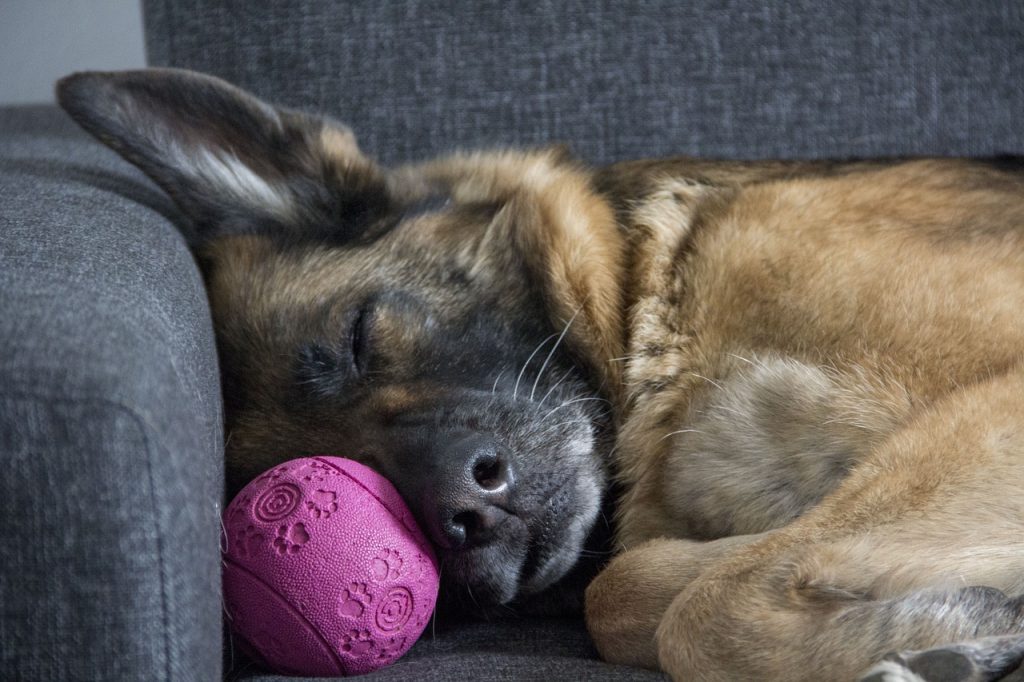
If your dog has ear mites, it will shake its head frequently or scratch its ears until they bleed. The mites will leave little brown spots (dried blood) on the outside of the ear flap.
They will also have a dark brown waxy substance in the outer part of the ear canal that needs to be cleaned off with a cotton swab dipped in hot water and alcohol. Mites are caused by excessive hair inside the ear flap and an accumulation of dirt, but they can be avoided by taking your dog for regular grooming sessions.
Dental care
If you find yourself with an energetic German shepherd, you should emphasize dental care. These dogs are prone to many problems like plaque, gingivitis, and periodontal disease—but luckily, most can be easily prevented with regular brushing.
Most owners will want to purchase a toothbrush for their pet and some form of dog-friendly toothpaste or other dental hygiene product.
Make sure you brush your dog’s teeth at least two to three times per week; if your dog doesn’t like the taste or texture of some toothpaste brands, try mixing it with some food they want. Your veterinarian may also recommend the best cleaning of your pet’s teeth without causing pain or injury.
German Shepherd Grooming: Advanced Care and Maintenance
German Shepherds are known for their intelligence, loyalty, and versatility. Their thick double coat and active nature make them a breed that requires more grooming attention than others. This chapter will provide advanced care and maintenance tips to keep your German Shepherd looking and feeling their best.
Seasonal Coat Care
German Shepherds have a double coat that sheds heavily twice a year, during the spring and fall. During these shedding seasons, it’s important to increase the frequency of brushing to help manage the shedding and keep your dog comfortable. Using a de-shedding tool can be particularly helpful during these times.
Skin Care
German Shepherds can be prone to dry skin, which can lead to itching and discomfort. Regularly check your dog’s skin for dryness, redness, or irritation. If you notice any issues, consult with your vet. They may recommend a special shampoo or supplement to help improve your dog’s skin health.
Exercise and Grooming
German Shepherds are an active breed that requires regular exercise. Regular activity can help keep your dog’s coat and skin healthy by promoting good circulation and helping to distribute natural oils. After exercise, check your dog for any dirt, debris, or pests that may have gotten caught in their coat.
Advanced Dental Care
In addition to regular brushing, German Shepherds can benefit from dental chews and a balanced diet that supports dental health. Regular vet check-ups can also help catch any dental issues early.
Professional Grooming
While many aspects of grooming can be handled at home, there may be times when professional grooming is beneficial. Professional groomers can handle tasks like ear cleaning, nail trimming, and thorough bathing. They can also provide services like de-shedding treatments, which can be particularly helpful during shedding seasons.
In conclusion, while German Shepherds require more grooming attention than some breeds, regular care can keep them looking and feeling their best. Paying attention to their coat, skin, teeth, and overall health ensures that your German Shepherd stays healthy and happy.
Conclusion
If your German shepherd needs veterinary care, you should immediately take him to the vet. You should also ask your vet about products that may help keep your pet healthy, such as flea treatments, heartworm medications, and food supplements.
